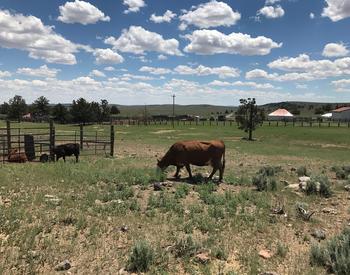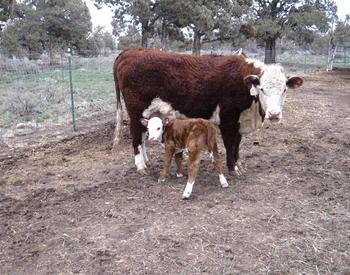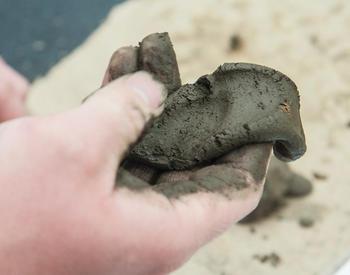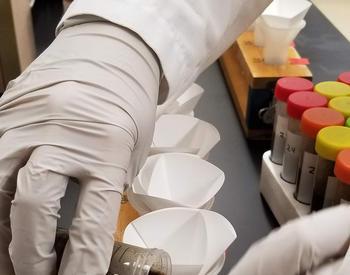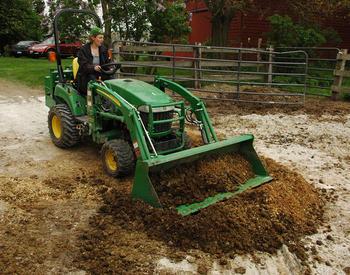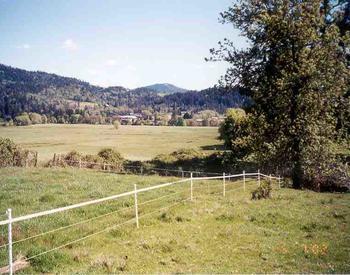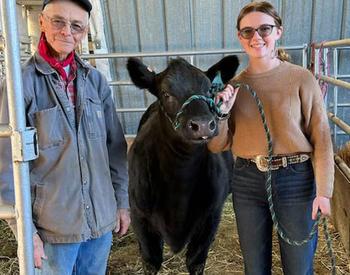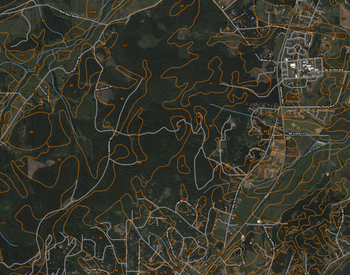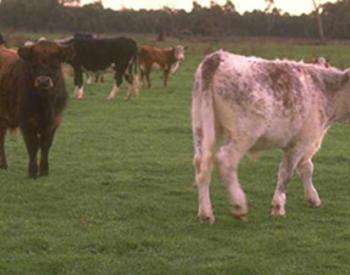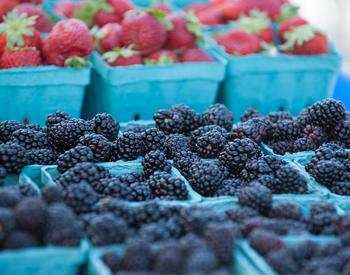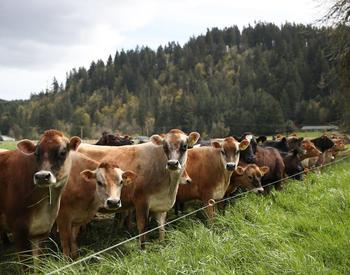Transcript
Welcome to living on the land. Your source of useful information for Eastern Oregon Country living. Brought to you by. Your Oregon State University Extension Service. Having livestock means having manure. Lots of it. One way to manage manure is to compost it. Composting can reduce the bulk of manure by about 50% and kill weed seeds and pathogens. The four ingredients for compost are materials containing carbon and nitrogen and air and water. There should be more carbon in the compost pile than nitrogen. An ideal carbon to nitrogen ratio is about 30 parts carbon to one part nitrogen. Manure provides most of the nitrogen and bedding provides care. But all manures aren't the same. Sheep, goat, horse, and cow manures usually have a good carbon to nitrogen ratio, but some manures, such as pig or poultry can be too wet. And contain too much nitrogen to compost well. To fix this, add a dry high carbon material like wood chips or straw to these particular types of poop. The third ingredient is air. Composting is an aerobic process. Meaning it needs lots of oxygen. The best way to maintain aerobic conditions is to build a pile that allows air exchange all through it. This is called good porosity. To get good porosity, consider installing aeration pipes. Which are perforated pipes set vertically or horizontally under the pile. Using aeration pipes and turning the pile every few days helps maintain good air flow and porosity. Finally, you need water, not too little, and not too much. To see if your compost pile has just the right amount of water, squeeze a handful of compost, A Sheen of water should remain on your gloves. And you should be able to press out a few drops of water. This wet film around the solids is important. Because that's where the microbes that cause decomposition live. If the pile is too dry. The composting process slows down or stops. This means you might. Need to add water during hot and dry periods. On the other hand, if the pile is too wet and aerobic bacteria take over and the pile will start to smell bad. When you've got the four ingredients just right, carbon nitrogen, air and water. Your manure pile will generate heat. To kill pathogens, parasites and weed seeds in the manure. Keep the temperatures within the compost pile between 140 and 160 degrees Fahrenheit for several weeks. The best size for the pile to retain its moisture and heat is about four to six feet tall and wide, and as long as needed. But don't make your piles so big you can't turn it. Compost usually takes several months to decompose well. Finished compost will be fine and crumbly and have a pleasant smell. Oh, and wear gloves when you work with compost and wash your hands after contact. You've been listening to living on the land for more details on managing and composting manure, read the OSU extension publication managing manure. And contact your local Oregon State University Extension Service agent soil and Water Conservation district. Or Oregon Department of Agriculture.
This podcast episode is part of the Living on the Land series. It provides concise information on the basics of livestock manure management, including handling, storage, composting, use, and ways to reduce negative effects on the environment. Particularly for the region east of the Cascade Mountains.
This is from the Living on the Land series. Download the related PDF - Living on the Land: Managing Manure
The phrase “Living on The Land” is used with permission from Living on The Land Stewardship for Small Acreage, © 2008, UNCE/WSARE.

